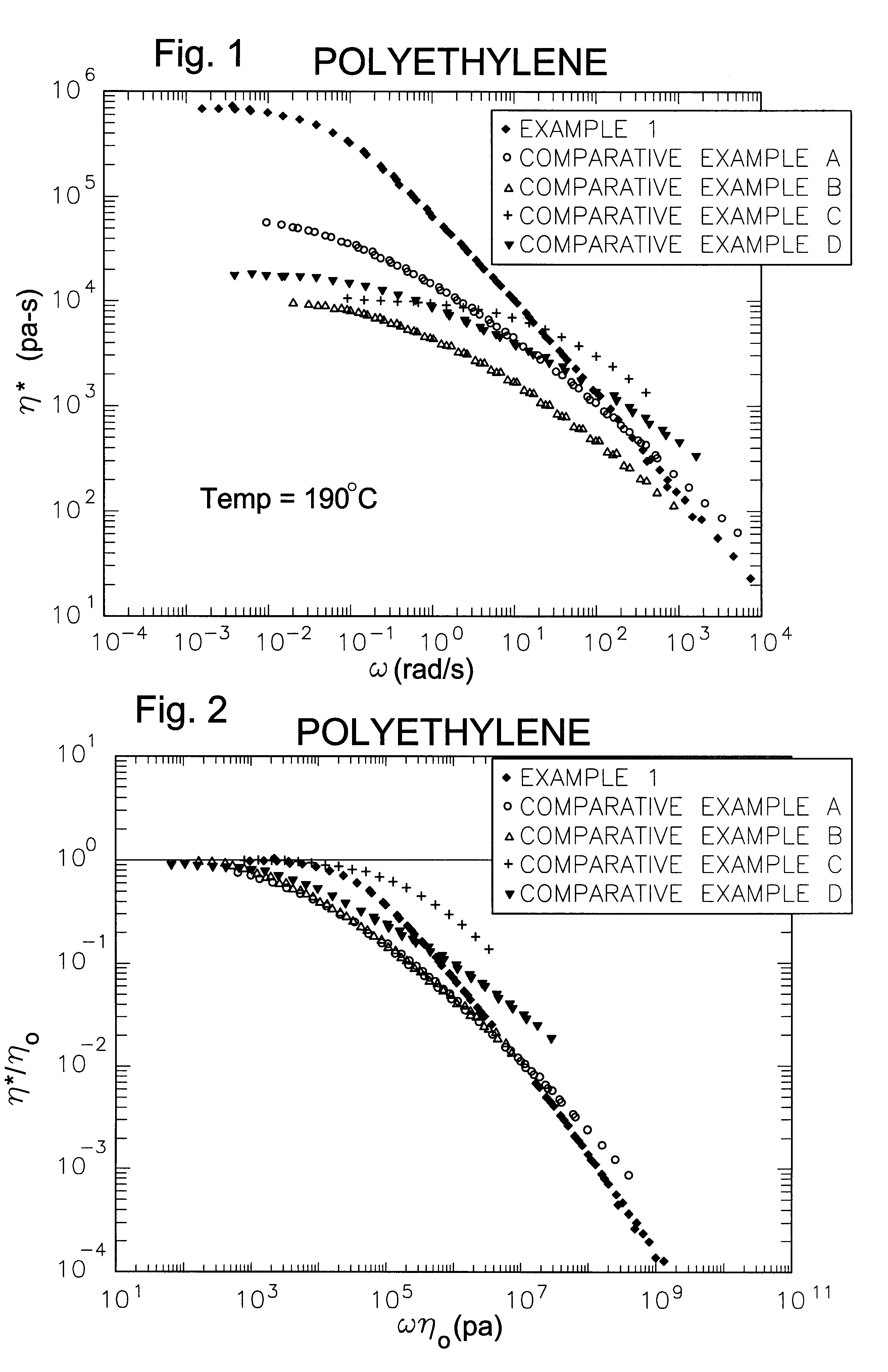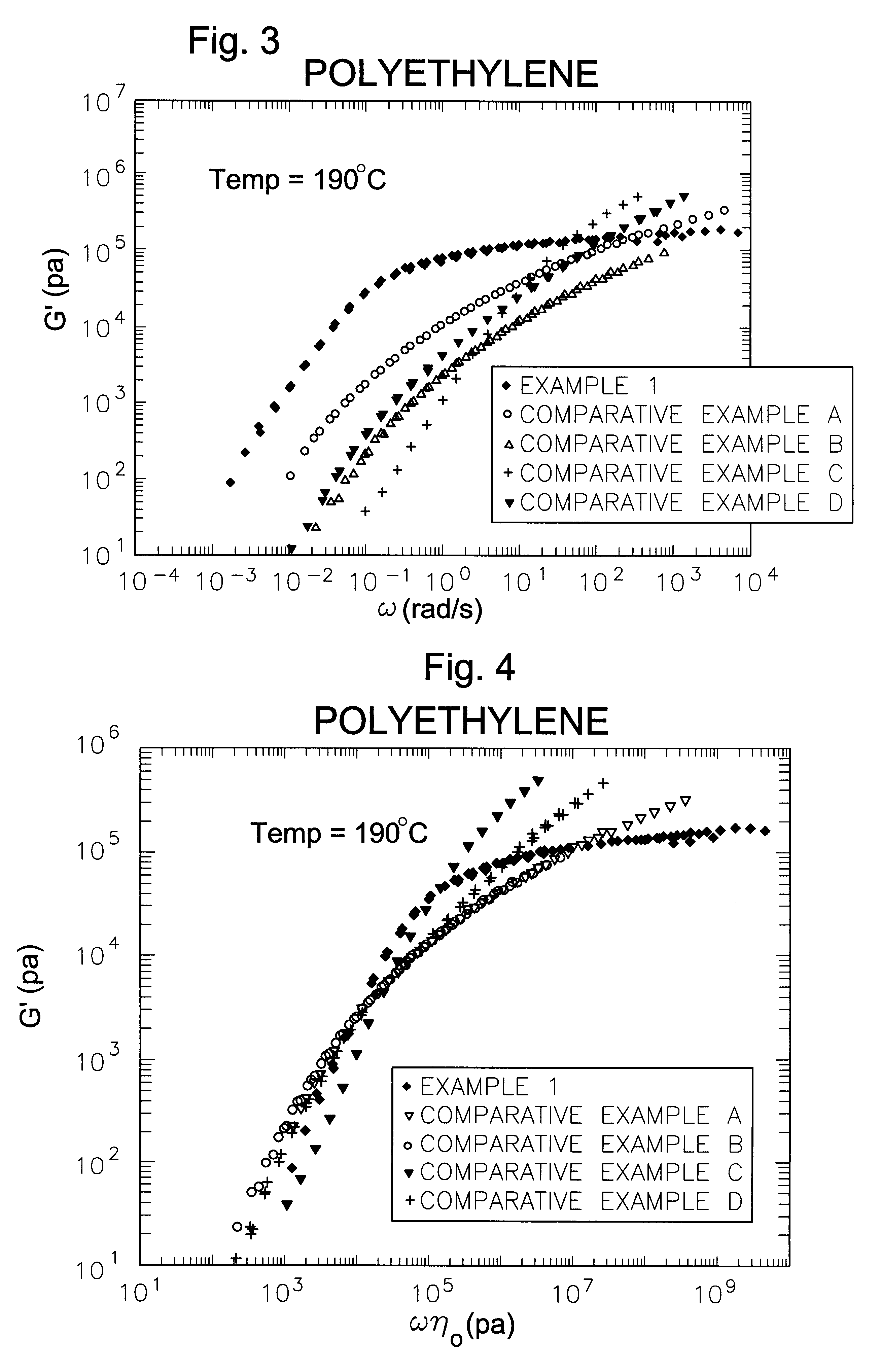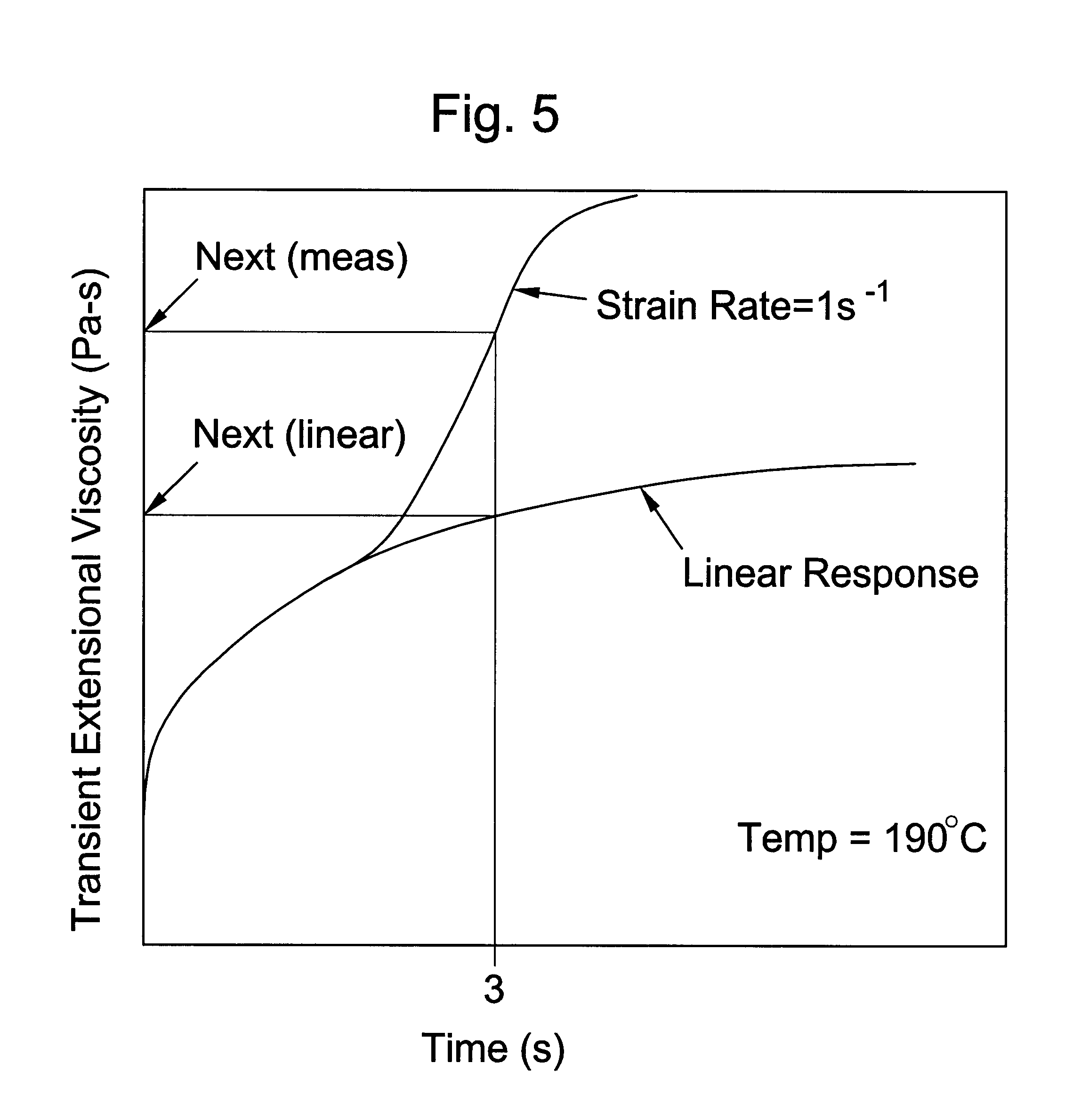Processing olefin copolymers
a technology of olefin and copolymer, applied in the field of polymer composition, can solve the problems of lack of desirable solid state attributes otherwise available, easy processing of mwd copolymers, etc., and achieve the effects of low viscosity, low viscosity, and large degree of shear thinning
- Summary
- Abstract
- Description
- Claims
- Application Information
AI Technical Summary
Benefits of technology
Problems solved by technology
Method used
Image
Examples
example 1
Preparation of C1
A comb polybutadiene polymer (PBd) was prepared by coupling hydrosilylated polybutadiene backbone chains with polybutadienyllithium sidechains, or branches. The polybutadiene which was used as backbone for the hydrosilylation reaction was prepared by anionic polymerization using high vacuum techniques, with sec-BuLi in benzene at room temperature. (Characterization: M.sub.n =106,500 by size exclusion chromatography (SEC) based upon a polybutadiene standard; 10% 1,2 units). 10 grams of this backbone polymer chain were dissolved in 120 ml tetrahydrofuran (THF) in an one-liter round bottom flask equipped with a good condenser, to which 3 drops of platinum divinyl tetramethyl disiloxane complex in xylene (catalyst, Petrarch PC072) were added. The solution was dried overnight with 1.5 ml trimethylchlorosilane, followed by the addition of 7.55 mmole dimethylchlorosilane. The mixture's temperature was raised slowly to 70.degree. C. Changing of the color, vigorous boiling a...
example 2
Preparation of C2
8 grams of PBd (M.sub.n =87,000 by MO, prepared as described in Example 1; BB.sub.3) dissolved in 150 ml THF were hydrosilylated in the same manner as described in Example 1, using 0.5 ml of trimethylchlorosilane and 2.43 mmoles of dimethylchlorosilane. The hydrosilylated polymer was freeze dried under high vacuum for 5 days. PBdLi (M.sub.n =4,500 by VPO; T.sub.5) was prepared as described in Example 1 by reacting 11.5 grams of butadiene with 2.550 mmoles of initiator. 1 gram of T.sub.5 was removed in order to be used for characterization purposes. The coupling reaction was accomplished as described in Example 1. Fractionation and characterization results are shown in Table I and Table II.
The resulting comb PBd (C2) was saturated catalytically as in Example 3. The saturation of the polymer was seen to be greater than 99.5% by proton NMR. The resulting saturated polymer had an M.sub.w of 97,000 by LALLS.
example 3
Preparation of C3
2 grams of PBd (M.sub.n =108,000 by SEC, prepared as described in Example 1; BB.sub.4) dissolved in 50 ml THF were hydrosilylated in the same manner as described in Example 1, using 0.5 ml of trimethylchlorosilane and 0.77 mmoles of dimethylchlorosilane. The hydrosilylated polymer was freeze dried under high vacuum for 2 days. PBdLi (M.sub.n =23,000 by SEC; T.sub.6) was prepared as described in Example 1 by reacting 22 grams of butadiene with 0.936 mmoles of initiator. 1 gram of T.sub.6 was removed in order to be used for characterization purposes. The coupling reaction was accomplished as described in Example 2. Fractionation and characterization results are shown in Table I and Table II.
The resulting comb PBd (C3) was saturated catalytically as in Example 3. The saturation of the polymer was seen to be greater than 99.5% by proton NMR. The resulting saturated polymer had an M.sub.w of 598,000 by LALLS.
PUM
| Property | Measurement | Unit |
|---|---|---|
| number-average molecular weight | aaaaa | aaaaa |
| temperature | aaaaa | aaaaa |
| number-average molecular weights | aaaaa | aaaaa |
Abstract
Description
Claims
Application Information
 Login to View More
Login to View More - R&D
- Intellectual Property
- Life Sciences
- Materials
- Tech Scout
- Unparalleled Data Quality
- Higher Quality Content
- 60% Fewer Hallucinations
Browse by: Latest US Patents, China's latest patents, Technical Efficacy Thesaurus, Application Domain, Technology Topic, Popular Technical Reports.
© 2025 PatSnap. All rights reserved.Legal|Privacy policy|Modern Slavery Act Transparency Statement|Sitemap|About US| Contact US: help@patsnap.com



